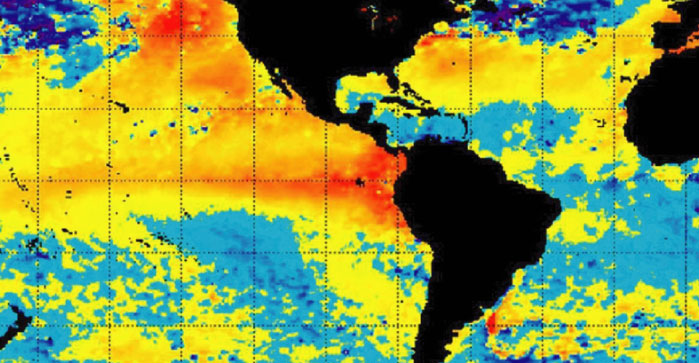Actualidad nacional e internacional
May. 19, 2023
EE.UU./Washington: «El Niño» podría ser el más fuerte de últimos 8 años
The National Weather Service placed a bet May 11 that a strong El Nino will dominate the weather next winter for the first time in eight years.
The monthly outlook by the agency’s Climate Prediction Center firms up expectations for the first strong winter El Nino since 2015-16.
Chances a strong El Nino will develop are about 55%, up from 40% a month ago, according to the climate center. “A potentially significant El Nino is on the horizon,” the center stated in a forecast summary.
El Nino winters are generally warm and dry in the Northwest, leading to small snowpacks and water shortages for summer irrigation. Washington’s “snowpack” drought in 2015 occurred during an El Nino. The last El Nino, in 2018-19, was a weak one.
Higher sea-surface temperatures in the Pacific Ocean trigger an El Nino. Above-average temperatures off South America are “striking” and moving west toward Indonesia, according to the climate center.
The mid-Pacific isn’t quite warm enough yet for an El Nino, but the climate center predicted an 80% chance one will form as soon as this month.
Once the El Nino takes hold, there’s a more than 90% chance it will stay through the winter and an 80% chance it will be at least moderate in strength, according to the center.
The World Meteorological Organization in early May pegged the chances of an El Nino forming at 80%. The organization did not predict the strength.
An El Nino generally increases rain in the southern U.S., parts of southern South America, the Horn of Africa and Central Asia. El Nino can also cause droughts in Australia, Indonesia and parts of southern Asia.
A La Nina, triggered by below-average sea-surface temperatures, has prevailed for the past three winters. Sea-surface temperatures only recently shifted into a “neutral” state, neither warmer nor cooler than average.
La Nina winters are generally wet and cool in Washington and dry and warm farther south. Average temperatures in the Cascade Range are a few degrees lower than normal during La Nina, according to weather service charts.
Contrary to expectations, Washington’s snowpack was average this year, while California’s snowpack set records.
In making seasonal weather predictions, climatologists rely on forecasting models that predict sea-surface temperatures for the coming months. The Climate Prediction Center will issue a summer outlook for the U.S. next week.
capitalpress/may 15, 2023
VOLVER A NOTICIAS
